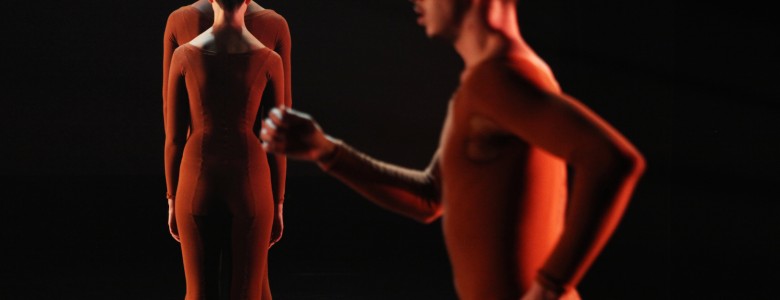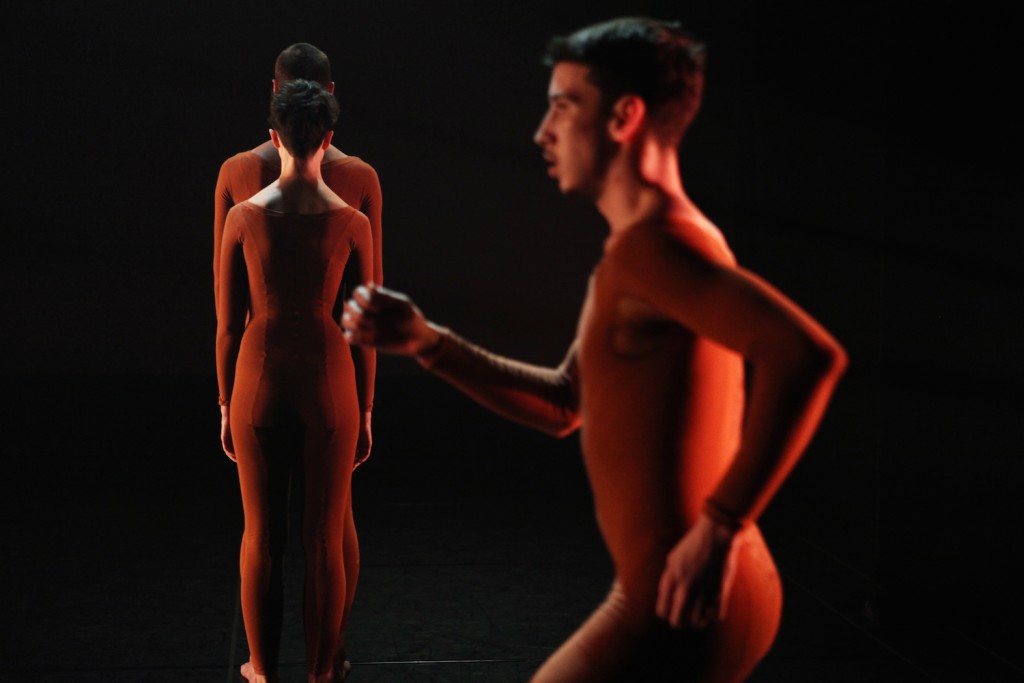In June 2015 Carla Peterson presented the Dance/USA Honors award to Trisha Brown at Dance/USA’s Annual Conference. Peterson is the director of the Maggie Allesee National Center for Choreography and former artistic director of New York Live Arts and Dance Theater Workshop and executive director of Movement Research. What follows are her remarks:
Here are a few words about why it means so much to me to present this Dance/USA Honor Award to the inestimable Trisha Brown.
I was never a dancer—outside of being your average kid in a tutu—but was someone who early on had a strong affinity for kinesthetic intelligence and poetry. I was instead a gymnast, fourth in the country on trampoline. But with the verifiable cutefest that gymnastics for women was becoming at the time in the 1960s, it ceased to be interesting to me so I quit and turned to visual arts and, ultimately, to dance and performance, working over the years as a curator, artistic director, writer, and occasional performer.
What sealed it for me? Seeing Viola Farber back then, early Nikolais, early Tharp, Merce, and even earlier, the recently passed and incomparable Maya Plitsetskaya.
And seeing Trisha—more than equal, in her own revolutionary way, to these, her fellow giants.
But it would be sheer hubris of me to suggest that I have something to say about Trisha that hasn’t already been said by countless knowledgeable folks: curators, international festival producers, critics, scholars, visual arts leaders, peer artists and longtime colleagues. This luminary, who has so deeply influenced succeeding generations of artists over the course of her long, brilliant, multidirectional and game-changing career, has had so much written about her, so many awards.
So I am going to go personal. Here are a couple of deeply happy reminiscences . . . for which I have enormous gratitude.
Twice I had the beyond meaningful chance as a curator to present Trisha and the company. The first time—in conjunction with the TBDC’s [Trisha Brown Dance Company’s] fortieth anniversary celebration year—at Dance Theater Workshop (DTW) as part of our Season of Returns program, which was intended to bring back reprisals of seminal works by influential makers. That rationale was a gigantic understatement when applied to Trisha.
On DTW’s at least decent-size stage, with its intimate 184-seat house, we all got the rare opportunity to be with the company, up close. Trisha, an internationally acclaimed artist who has been on some of the most prominent operatic stages in the world, was here on our stage, her dancers and dances all flesh and blood and liquid bones, with that unpredictable yet mathematical rigor. We had the chance to experience such a wonderful level of intimacy with these dancers and her works.
We got to be up close with:
Foray Foret (1990), complete with marching band—I had been at the then still young Wexner Center in 1991 when we presented it there with the tremendous OSU Marching Band. For MG: The Movie (1991), shot by Trisha from the wings from her Back to Zero series, and the marvelous reprise of Watermotor (1978), this time with a male dancer returning to Trisha’s company, the wonderful Neal Beasley. The original documentation by Babette Mangolte with the beautifully watery Trisha was projected on our lobby wall, in lovely contrast to the very propulsive embodiment of that same movement language by Neal on the stage.
It was a very special two weeks for me, for DTW and for our audiences, and to have Trisha with Burt, her partner, in the house practically every night.
Several years later, the company returned as part of its farewell tour, with Opal Loop/Cloud Installation (1980), Solo Olos (1976) Newark (1987), and the 1981 Son of Gone Fishin’ with sound score by Robert Ashley.
That same year, Movement Research (MR) honored Trisha and the original cast of Set and Reset (1983) (along with me as a former MR executive director). To a packed, and at first hushed and then jubilant house at Judson Church, they performed the work, first with the original cast—Diane Madden, Stephen Petronio, Vicky Shick, Irene Hultman, Randy Warshaw and Eva Karczag—then one by one each replaced by the current company.
There was something so beautiful in the passing of the dancers’ metaphoric batons, from original cast to current members, something so poetic about how influence and information is passed down, and on. Our lineages. But batons she has indeed passed, over and over, and so generously and beautifully.
For me, Trisha is an artist whose means, spatial awareness and movement vocabulary have always given me delicious pleasure, not only on a cerebral level but also on a deeper plane that speaks to our fundamental body-mind connection, how one literally perceives dance. Watching her dancers over the many years has given me the deep kinesthetic sense that I am somehow, like them, fully embodying the intelligent choices of movement and choreographic structures. That I can (magically) move like they move. That I understand without words why they are moving the way they are. That I literally experience a sense of being them, all while safely planted in my theater seat. That I am them.
I end now with another lovely moment for me, though insignificant perhaps for the field. When I was for a moment working as a video artist and documenting dance in the mid-‘90s, I got the chance to videotape Trisha in her prime dancing her indelible solo work If you couldn’t see me (1994) in Houston, Texas, a work that has been since set on the beautiful and statuesque Leah Morrison. Watching Trisha even more acutely through the camera lens, her back, and spine and limbs, ever to the audience, and having to simultaneously follow and anticipate her intelligent, poetic, and elastic expressivity, I had that delicious kinesthetic experience imprinted even more in my being.
And I secretly hope that my 3/4 tape is still in their archives.
Thank you Trisha so very much. I hope that this is taken as the love letter it is meant to be.
—Carla Peterson, Dance/USA’s Annual Conference, June 2015
Carla Peterson is currently the director of Maggie Allesee National Center for Choreography (MANCC) at Florida State University’s School of Dance, Peterson previously served as artistic director (and chief curator) of New York Live Arts (2011–2014) and of Dance Theater Workshop (2006–2011), as well as executive director of Movement Research (2002–2006). She received a 2005 “Bessie” (New York Dance and Performance Award) in recognition of her leadership at Movement Research and service to the dance community, and was made a Chevalier de L’Ordre Des Arts Et Des Lettres in 2012 by the French government.


